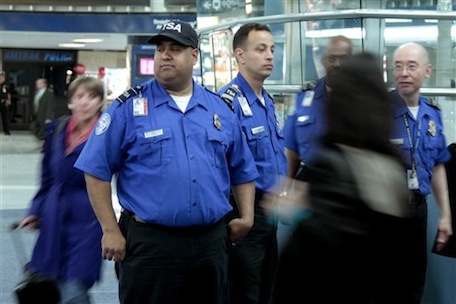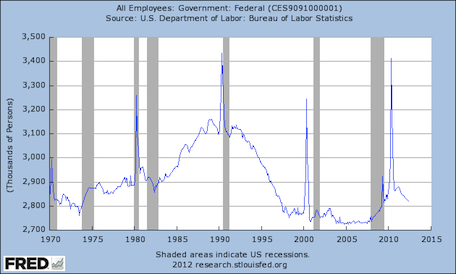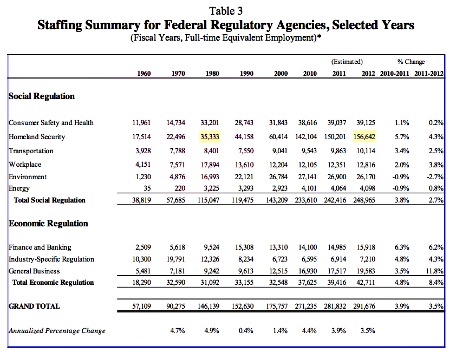A Bloomberg News story last week on how the folks who oversee the regulators are overmatched these days raises a question: What’s a regulator?
Here’s the lede (emphasis mine)
As the U.S. government’s regulatory bureaucracy has ballooned, one agency has been left behind: the office that oversees the regulators.
The regulatory bureaucracy has ballooned? That doesn’t sound right. The federal workforce, after all, is down over the last forty-plus years, and places like OSHA are shadows of their former selves.
Bloomberg gives us its numbers in the next paragraph:
The number of people working in federal agencies with regulatory authority has doubled to about 292,000 under both Republican and Democratic administrations during the past 30 years. In the same period, the Office of Information and Regulatory Affairs, the White House bureau that reviews most major rules, has shrunk to 45 employees from 90, according to data compiled by researchers at George Washington University and Washington University in St. Louis.
Have regulators, as Bloomberg seems to be saying, doubled in the last thirty years, adding 145,000 jobs? That depends on whether you think these guys are regulators:

To see why, look at the research Bloomberg cites (click to enlarge; highlights are mine):
More than 83 percent of the new regulatory-agency jobs since 1980 came in the Department of Homeland Security, and almost all of those DHS jobs were created after 2000. That spike came when the Bush administration and Congress federalized private airport security in the wake of the catastrophic failure on 9/11. The Transportation Security Administration accounts for 60,000 of those 145,000 new regulatory jobs. Meantime, ramped-up border security—most of it since 9/11, accounts for another 61,000.
Quasi-defense jobs are hardly what most people think about when they talk about regulators. And Bloomberg’s story is about who oversees the rulemakers, not the guy checking your driver’s license at LAX.
So what do those regulatory staff number since 1980 look like sans DHS?
Without Homeland Security, regulatory staff has increased 16 percent since 1980, which is well below the 37 percent growth rate of the overall population.
Bloomberg isn’t technically wrong. But it should have given readers more context on its numbers.
Ryan Chittum is a former Wall Street Journal reporter, and deputy editor of The Audit, CJR’s business section. If you see notable business journalism, give him a heads-up at rc2538@columbia.edu. Follow him on Twitter at @ryanchittum.


